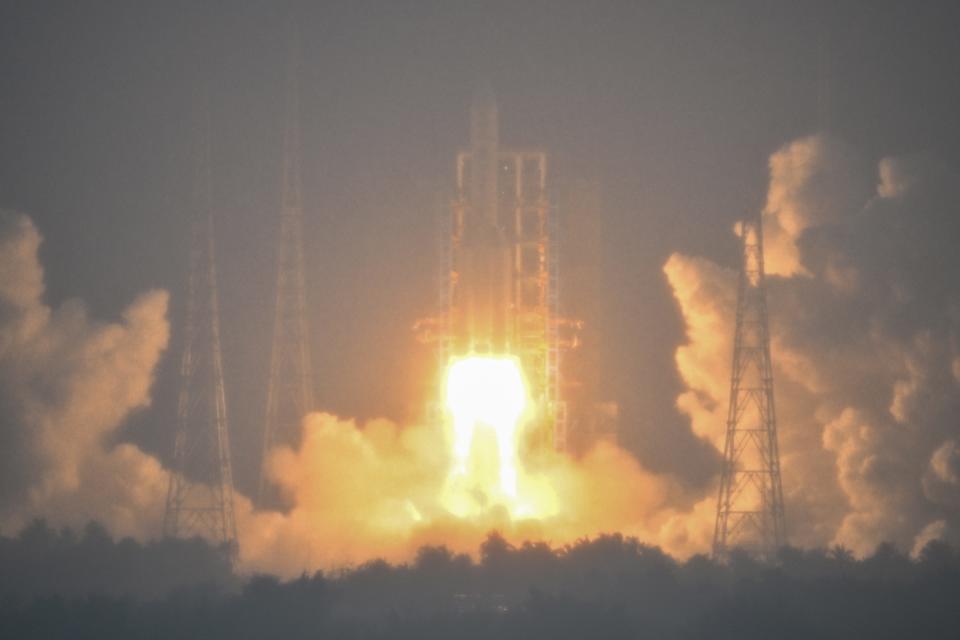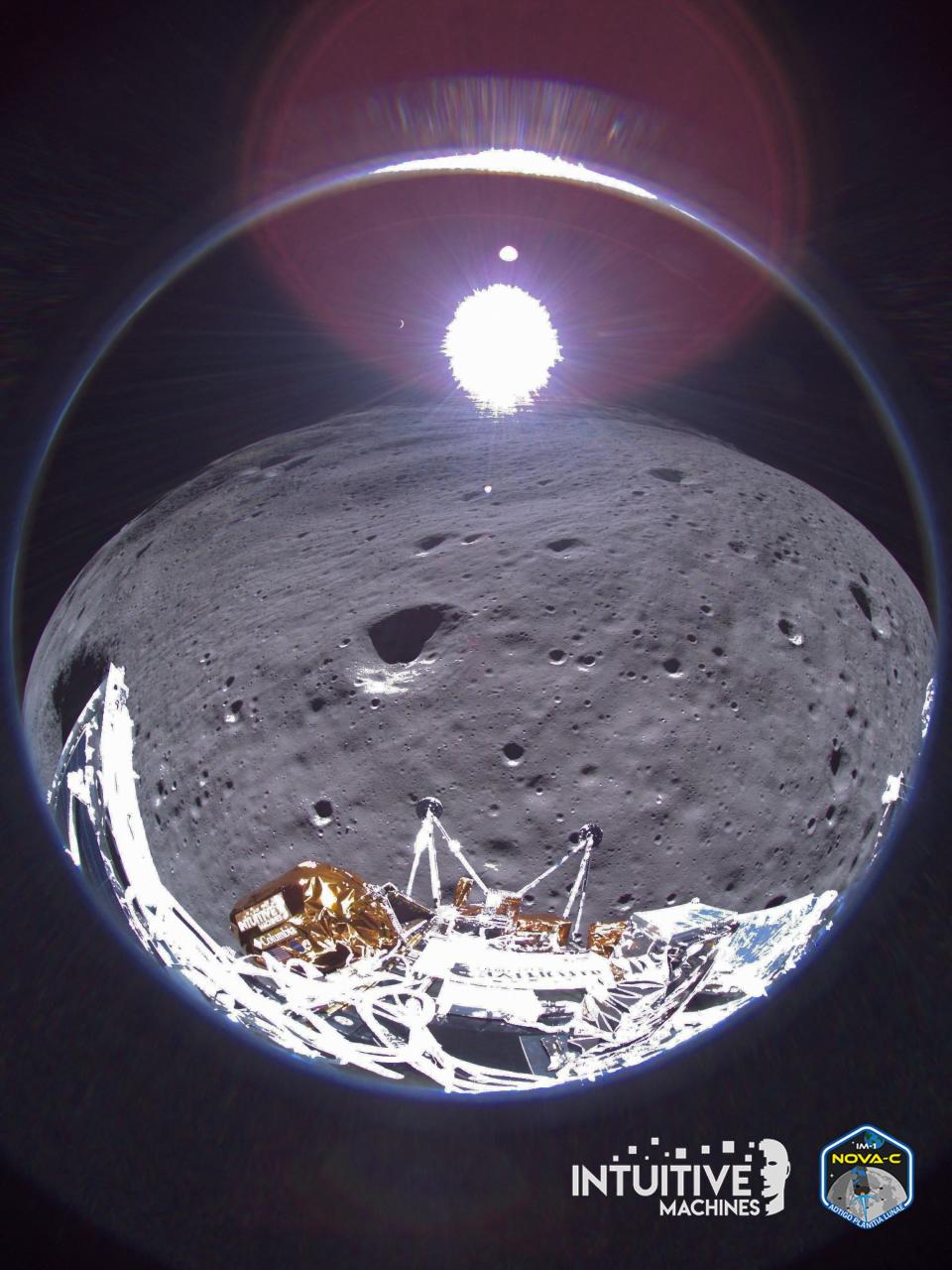China launches lunar probe, looking to be 1st nation to get samples from far side of moon
China is aiming to become the first nation to ever retrieve samples from the far-side of the moon with an ambitious mission to send a probe to the unexplored region that launched Friday.
The launch of the uncrewed mission is a key part of China's goal of becoming a space power and, ultimately, sending its own astronauts to the lunar surface in the years ahead. The far-side of the moon is shrouded in mystery, and China hopes that by obtaining and returning the samples, the nation will glean key insights into how and why it's so different from the near-side, according to multiple reports.
Friday’s launch also comes amid a multi-nation space race heating up between countries like India, Japan and the U.S. who have their sights set on the moon. Space agencies across the world view the moon as a valuable destination due to the resources it provides to aid further deep space exploration and missions to Mars.
New Webb telescope photos: Horsehead Nebula's iconic 'mane' is seen in stunning detail in new images from NASA
China's Chang’e-6 probe on 53-day mission

The Chang’e-6 lunar probe, named after the Chinese mythical moon goddess, was carried aboard a rocket that lifted off at 5:27 p.m. Friday from the Wenchang launch center on south China’s Hainan island.
The spacecraft carrying the lander separated from China's Long March-5 rocket within about 35 minutes as spectators gathered to watch the historic moment, which was also televised live by state broadcaster CCTV. The country’s National Space Administration said the launch was a success, multiple outlets reported.
The anticipated 53-day mission comes after China became the first country in 2013 to achieve a robotic lunar landing in nearly four decades, and two years after the nation completed its own orbital space station, the Tiangong, in 2022 to rival the International Space Station.
The spacecraft carrying the Chang’e-6 lander is expected to take about five days to reach the moon's far side, which never faces Earth, where it will then orbit for another 20, according to reports. Within 48 hours of touching down, the lander will drill into the surface and scoop up samples with a robotic arm before preparing for a trip back to Earth, the Associated Press reported.
The mission follows another in 2020 when its predecessor, Chang’e-5, gathered nearly four pounds of regolith from the moon’s near side and brought it to Earth. By analyzing the samples, China scientists hope to figure out why the two sides of the moon are so different, Ge Ping, deputy director of the China National Space Administration’s (CNSA) Center of Lunar Exploration and Space Engineering told reporters last week from the launch site, according to CNN.
China’s space program's main aim is to put astronauts on the moon by 2030 – four years after U.S. astronauts are slated to return to the lunar surface in 2026 for the first time since the Apollo era came to an end five decades ago.
Japan lunar lander powers away on moon
China's mission is the latest in a series of lunar missions designed to orbit or land on the moon's surface.
Last year, India landed its first spacecraft, the Chandrayaan-3, on the moon around the same time Russia’s first lunar mission in decades ended in failure when its Luna 25 probe crashed into the lunar surface.
In January, Japan became the fifth nation to get an uncrewed craft to the lunar surface, joining India, the U.S., Russia/Soviet Union and China. That lander continues to hum away on the surface, far outlasting its odds for survival more than three months since it touched down.
NASA plans future U.S. moon missions through Artemis
For the United States, American astronauts have not set foot on the moon since the last Apollo mission in 1972. NASA's Artemis program hopes to return the nation back to the lunar surface in order to establish a base of operations ahead of crewed trips to Mars.
But Artemis has been mired in delays and controversy as elected officials and other aeronautics experts have expressed concerns about the scope and cost of the ambitious program.

Before any humans can return to the moon, NASA needed to make sure an American probe could make it to the lunar surface to pave the way for their arrival.
Those hopes were initially dashed in January when an uncrewed craft designed by Pittsburgh-based aerospace company Astrobotic encountered a slew of issues. The Peregrine lander never made it to the moon, but a second chance for the U.S. came a month later.
The Odysseus lander designed by Houston-based Intuitive Machines had a sideways landing of its own on Feb. 22, but still made it to the surface and transmitted back data.
NASA, which was the primary customer for the mission, paid a hefty sum to have a payload of scientific instruments included aboard the lander to collect data that will help the agency prepare for future lunar missions.
Within a week of landing near the south pole, Odysseus was on the verge of powering down for good. In its final update on March 23, Intuitive Machines determined that Odysseus' power was depleted and the craft had "permanently faded after cementing its legacy into history as the first commercial lunar lander to land on the moon."
Eric Lagatta covers breaking and trending news for USA TODAY. Reach him at [email protected]
This article originally appeared on USA TODAY: China launches lunar probe to retrieve samples from far side of moon
